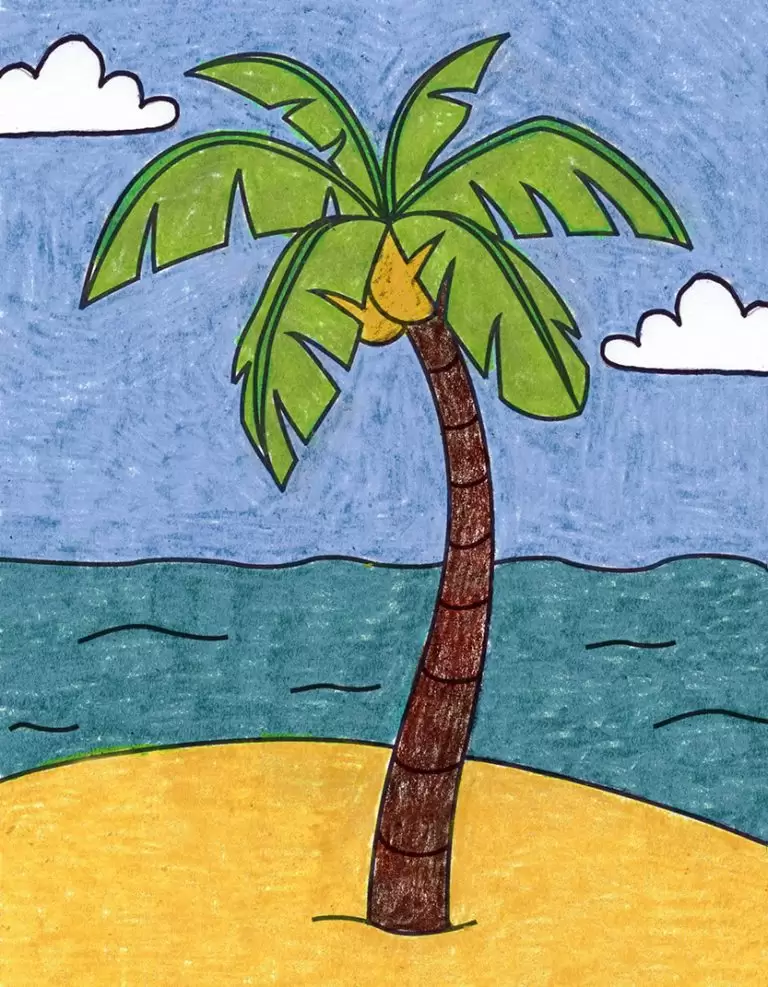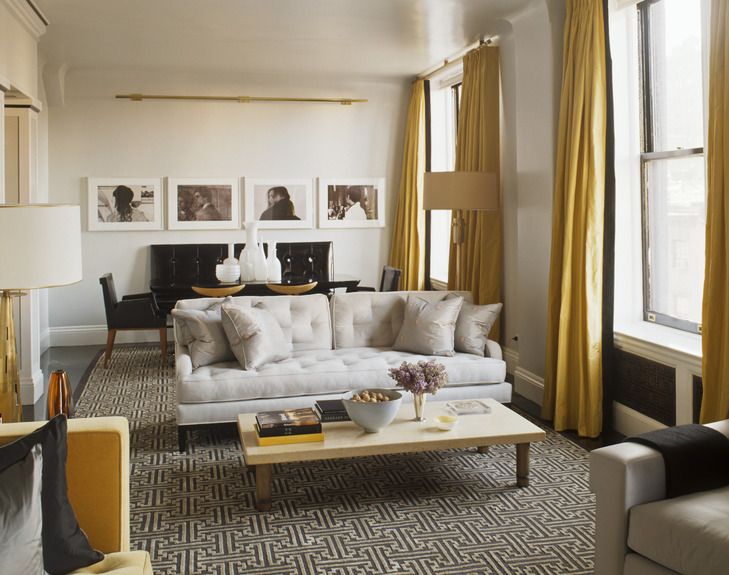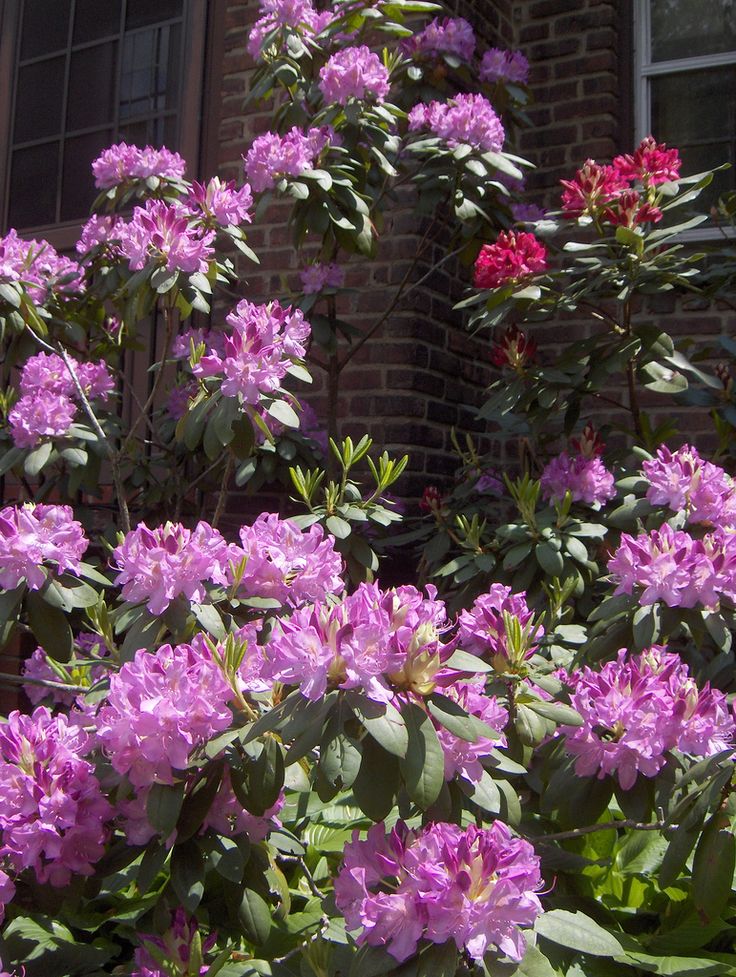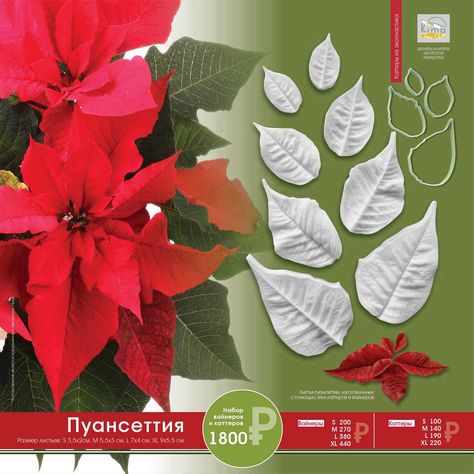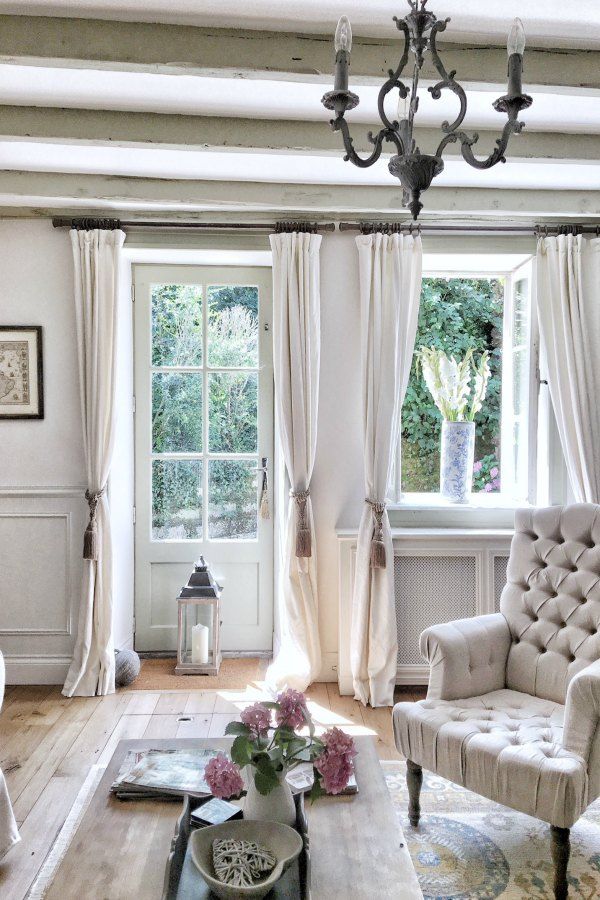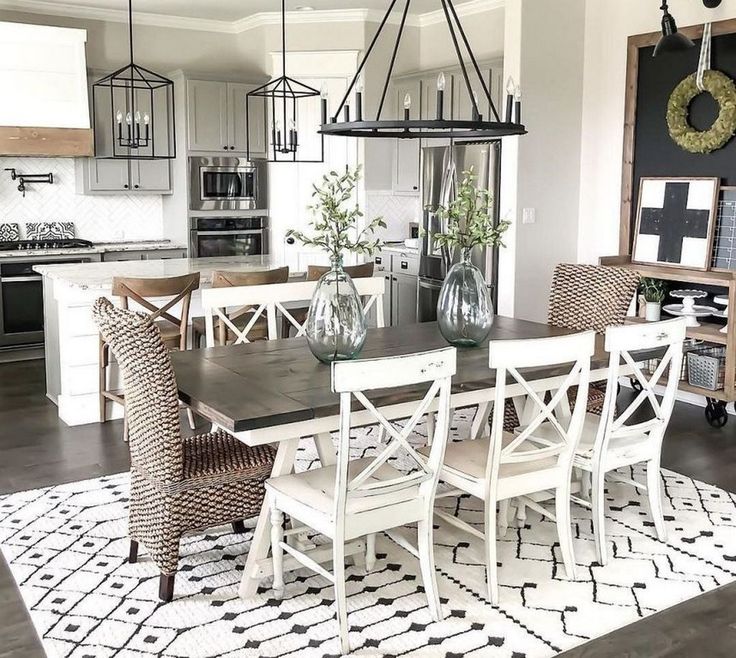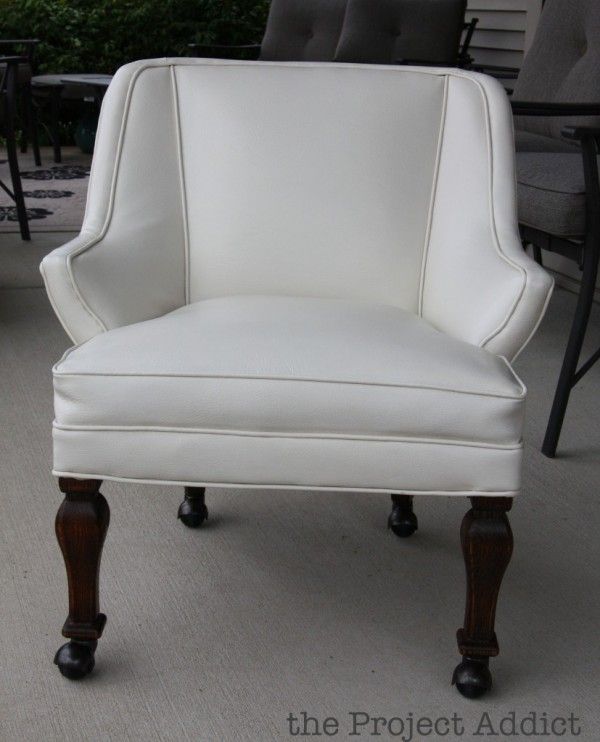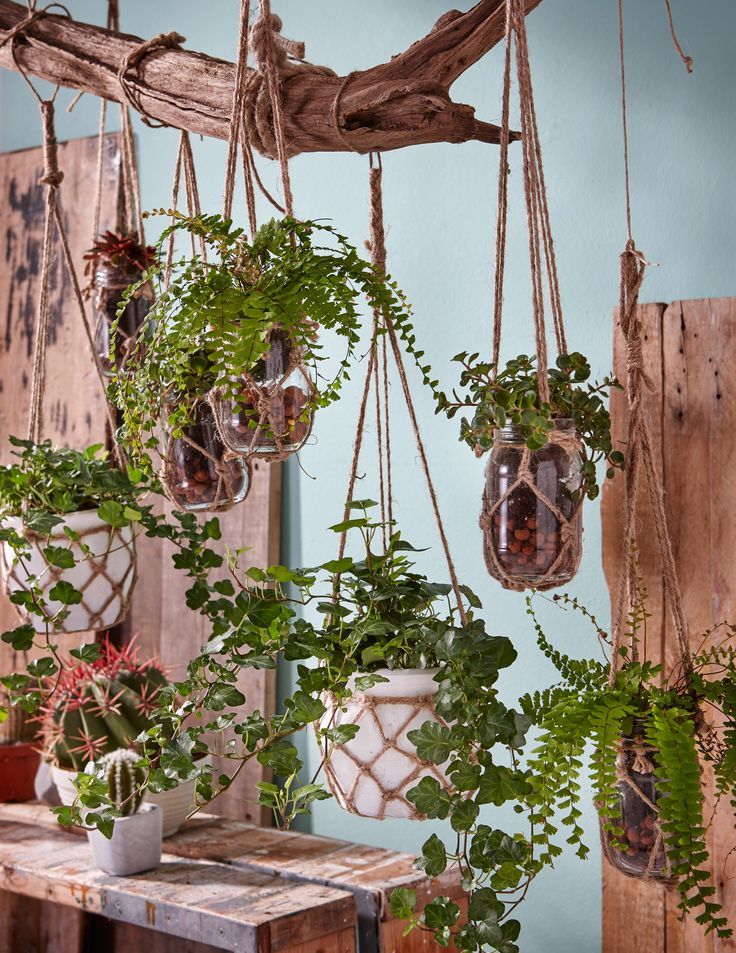Home design colors
20 Designer-Approved Interior Color Schemes To Try Now
Design: West of Main, Graphics: Sabrina Jiang for MyDomaine
In interior design, two colors are better than one, and three are better than two. But with thousands of colors and millions of shades to choose from, how could you possibly create a combination that works? The answer: With some professional guidance.
We tapped 20 interior designers for the tried and true color schemes they find themselves revisiting time after time. Whether you prefer rich colors with a glamorous feel or cool tones that look coastal chic, here are 20 pairings to incorporate in every room of your home.
01 of 20
Design: Valerie Darden of Brexton Cole Interiors, Graphics: Sabrina Jiang for MyDomaine
Almost everyone loves blue, and it's easy to see why.
"One of my favorite color schemes is a simple Parisian grayish-blue paired with natural beige tones and the addition of gold hardware," Valerie Darden, head designer of Brexton Cole Interiors says. "I mixed this combo together for this master bedroom, using Sherwin Williams' Silver Grey on the walls. I was inspired by Marie Antionette! It gives the room a calm and serene atmosphere."
02 of 20
Design: Valerie Darden of Brexton Cole Interiors, Graphics: Sabrina Jiang for MyDomaine
For a bold look, try green and red. We promise it won't look like Christmas.
"I love pairing hunter green and rich reds together, especially for boys' rooms," Darden says. "I like this color combo because it can give a vintage vibe to any room when paired with the right accessories. In this boy's bedroom, we went for the old-world collegiate look. The room looks adorable paired with plaids and a gallery wall mixed with vintage style frames and toys."
03 of 20
Design: Diana Weinstein, Photo: Jane Beiles, Graphics: Sabrina Jiang for MyDomaine
Blue is extra calming, but a pop of bright colors can give it the oomph it needs.
"I love how fresh and young the bright pops of fluorescent hues make a soft blue wall color feel," designer Diana Weinstein says.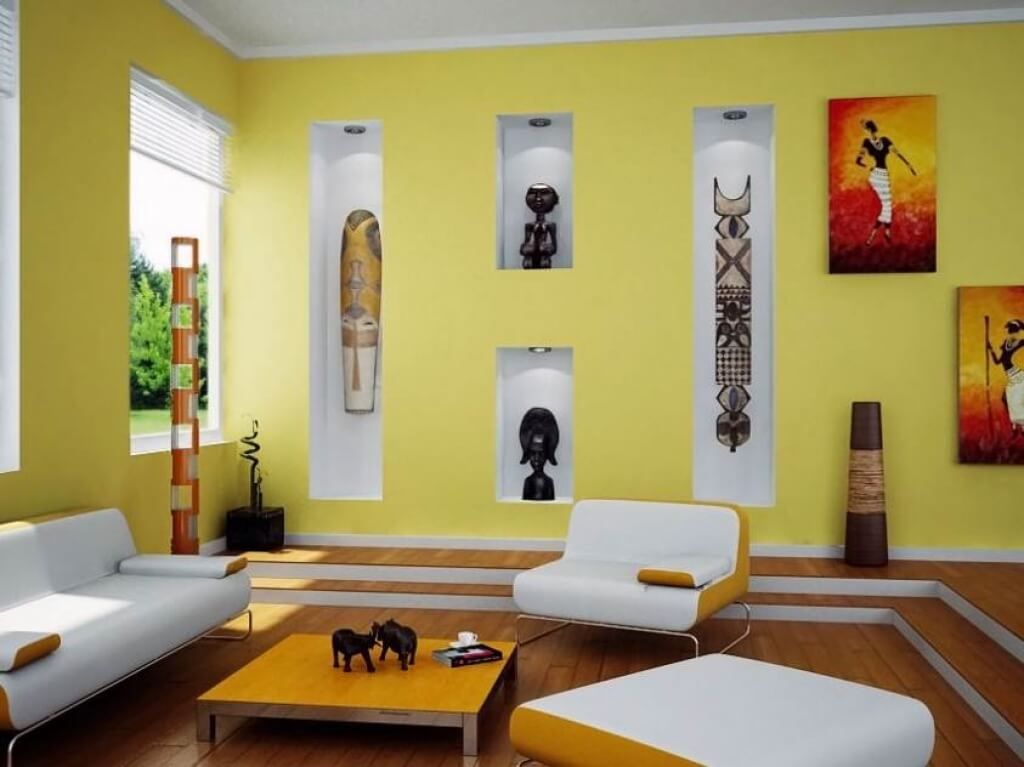 "The boldness of these neons adds an edge to what is typically a more traditional design. The clients on this specific home didn't like to take risks with color, but we encouraged them to try out this rug and tweed armchairs with these fun pops of pinks and yellows and oranges in them. This is now their favorite room."
"The boldness of these neons adds an edge to what is typically a more traditional design. The clients on this specific home didn't like to take risks with color, but we encouraged them to try out this rug and tweed armchairs with these fun pops of pinks and yellows and oranges in them. This is now their favorite room."
04 of 20
Design: Desiree Burns Interiors, Photo: Tamara Flanagan, Graphics: Sabrina Jiang for MyDomaine
If you're in the market for more earthy tones, green cannot be beat.
"I love incorporating pops of green as an accent color throughout a neutral home," Desiree Burns, the founder of Desiree Burns Interiors explains. "Bolder shades like forest green pack a big punch and make a beautiful impact, especially when combined with neutrals like light gray. It's a nice balance of a bold color counteracted by a neutral and works in almost any room! Whether you're going bohemian, rustic, farmhouse, contemporary, or glam, I think this color palette speaks to all different design styles.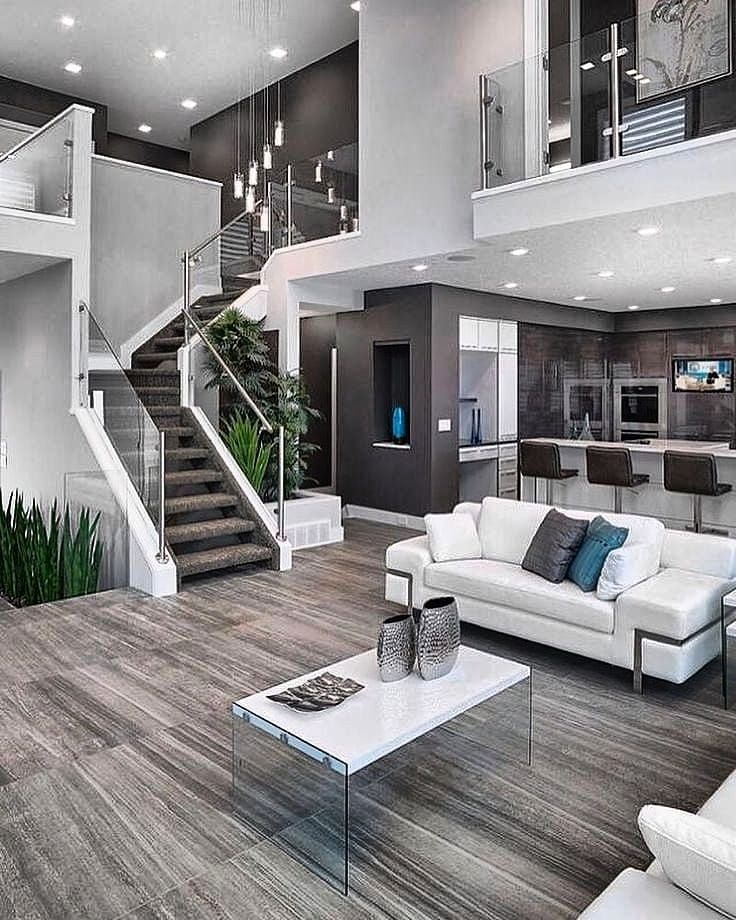 "
"
05 of 20
Design: Latham Interiors, Photo: Mike Schirf, Graphics: Sabrina Jiang for MyDomaine
A classic color combination found everywhere from Cape Cod homes to beach California bungalows, a pairing of blue and white is never a bad idea.
"Shades of blue and white are a fan-favorite combination that people feel they can often rely on," Sarah Latham, the principal of Latham Interiors, says. "The classic pairing looks clean and fresh, and we often pair it with natural wood tones to add depth, color, and texture to any space. Our favorite blue is Newburyport Blue HC-155 by Benjamin Moore, and the best part is it can easily be translated into most décor styles from bohemian to rustic and traditional to farmhouse."
06 of 20
Design: Michelle Gage, Photo: Rebecca McAlpin, Graphics: Sabrina Jiang for MyDomaine
For a more unexpected take on interiors, try a variation of pink and green.
"My favorite color scheme is pink and teal," Michelle Gage, the principal and founder of Michelle Gage Interior Design says. "There's something so perfect about how the pairing pops against one another. I love the soft and bright balance the combination brings to a room."
"There's something so perfect about how the pairing pops against one another. I love the soft and bright balance the combination brings to a room."
07 of 20
Design: Julia Alexander, Photo: Anna Yanovski, Graphics: Sabrina Jiang for MyDomaine
For a cooler toned room, blues and greens give off a calm and easygoing vibe.
"A color scheme of graduated blues and greens with neutral tones, natural woods, and black accents is my favorite combination," designer Julia Alexander of Julia Alexander Interiors says. "To recreate the look, take one color and repeat it in shades lighter and darker throughout your space. The pale blueish-green walls in this bedroom, paired with a rich green velvet headboard, feel classic, timeless, and serene."
08 of 20
Design: Katherine Carter, Photo: Amy Bartlam, Graphics: Sabrina Jiang for MyDomaine
Who says neutrals have to be boring? With pops of nearly cobalt blue, this space is anything but average.
"I love how elegant and chic black, blue and beige look and feel in this Venice beach home—the colors work so well together and add depth to this space," designer Katherine Carter explains.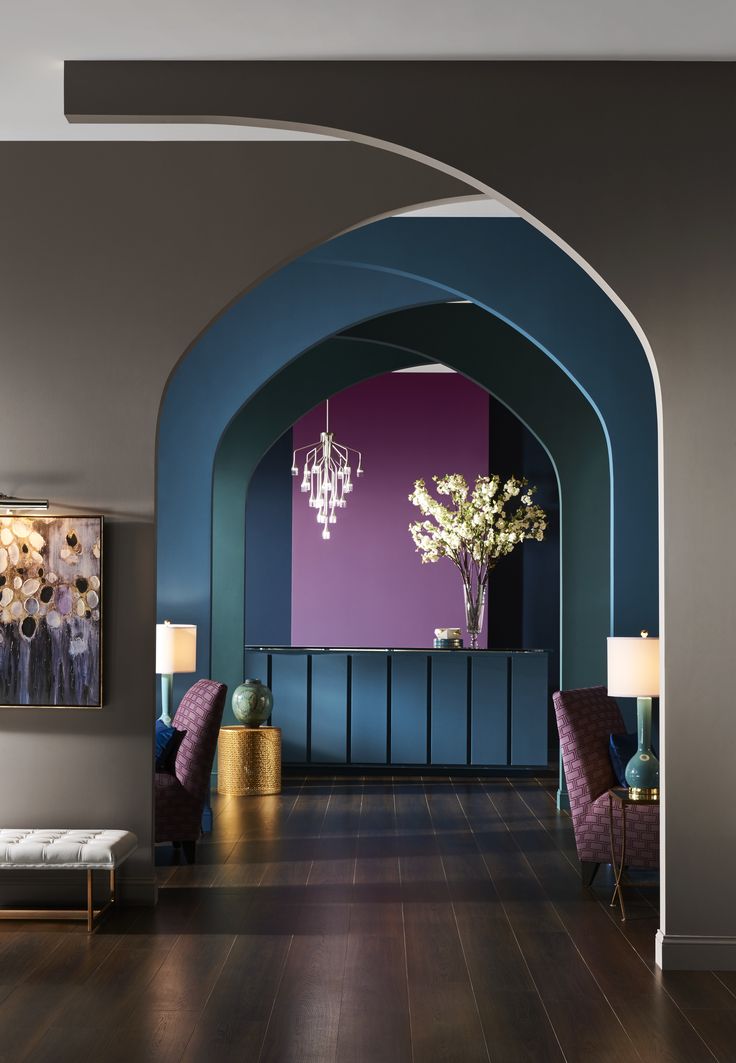 "With such versatile shades, this color scheme really works in any room in the house. However, for this project, we chose to keep it in living room, finding room, family room, and kitchen. For a modern contemporary look, make navy and black the primary colors and sprinkle in beige tones."
"With such versatile shades, this color scheme really works in any room in the house. However, for this project, we chose to keep it in living room, finding room, family room, and kitchen. For a modern contemporary look, make navy and black the primary colors and sprinkle in beige tones."
09 of 20
Design: Kelly Hurliman Interior Design, Graphics: Sabrina Jiang for MyDomaine
As they're both cool colors, green and blue always play well together.
"My all-time favorite color scheme is blue and green—it always works and, depending on the shades, can be super versatile," Kelly Hurliman of Kelly Hurliman Interior Design says. "Brighter tones can feel preppy and fresh, while dark shades give off a sophisticated, moody vibe. We went with Benjamin Moore's Polo Blue on the walls and added grass green art and decor into the mix in this room."
10 of 20
Design: Mindy Gayer Design Co., Photo: Vanessa Lentine, Graphics: Sabrina Jiang for MyDomaine
For a more neutral, earthy take, try gray-green and add black and white.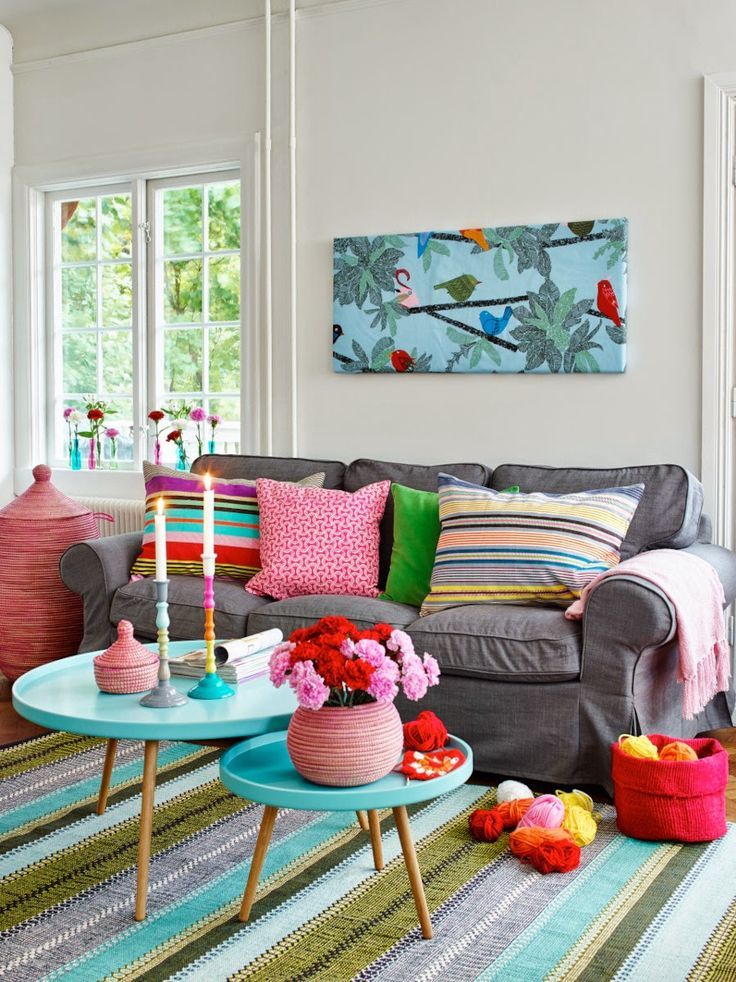
"My favorite color scheme at the moment is grayish-green hues combined with black and white neutrals," designer Mindy Gayer, of Mindy Gayer Design Co. "I gravitate towards green colors to bring the outside in, and sage tones are also very soothing. I love how this combination boasts plenty of contrast while still maintaining a timeless quality."
11 of 20
Design: Jonathan Rachman, Photo: Suzanna Scott, Graphics: Sabrina Jiang for MyDomaine
For an high-impact space, black and red make a bold statement.
"Any touch of color against black—preferably high-glossed black—makes for a winning combination," Jonathan Rachman of Jonathan Rachman Design says. "I love pairing it with red, because it's bold yet soft, and definitely a statement! There are so many shades of black, but for me it's blackest of the black possible that I love the most, such as Benjamin Moore Black."
12 of 20
Design: Diana Rose Design, Graphics: Sabrina Jiang for MyDomaine
Looking for more of a modern coastal vibe? Blue, tan, and gray are for you.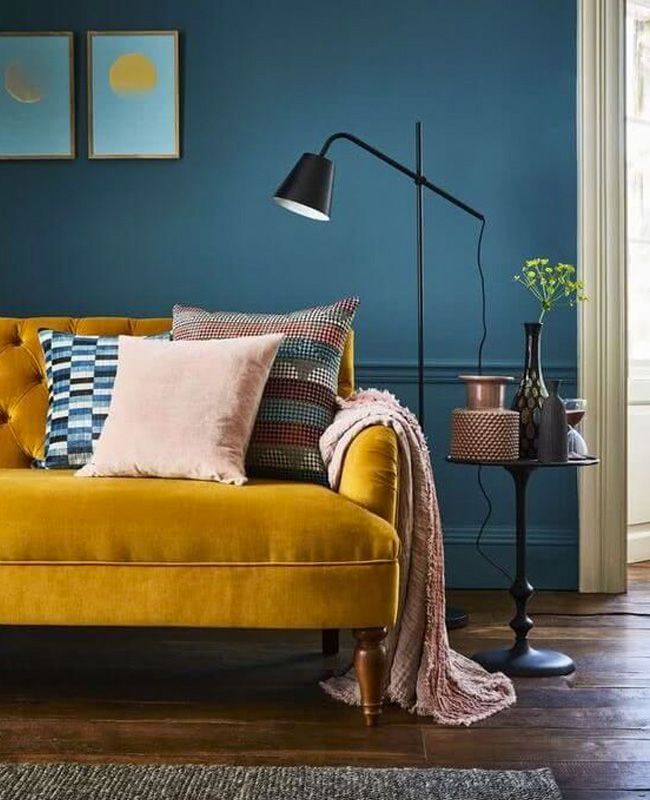
"One of my favorite color combinations is blue, sand, and gray, as it evokes a sense of peace and comfort and boasts a clean, modern feel," Diana Rose, the principal and creative director of Diana Rose Design says. "Although it is adaptable for many environments, I especially love it for homes situated with water views. Other nature-inspired accents such as tan driftwood, green plants, white marble work with the nature-inspired color palette to evoke a feeling of water and the beach."
13 of 20
Design: Michelle Berwick, Photo: Larry Arnal, Graphics: Sabrina Jiang for MyDomaine
Pairing a strong shade, like black, with a lighter pastel, like blush pink, provides a great contrast.
"Ever since I was a little girl, my favorite color has always been blush pink—there's just something about it that makes me happy and calm," Michelle Berwick, the founder and principal designer of Michelle Berwick Design, says. "These days, I've found a way to use it in a way that feels fresh, modern, and not at all childlike.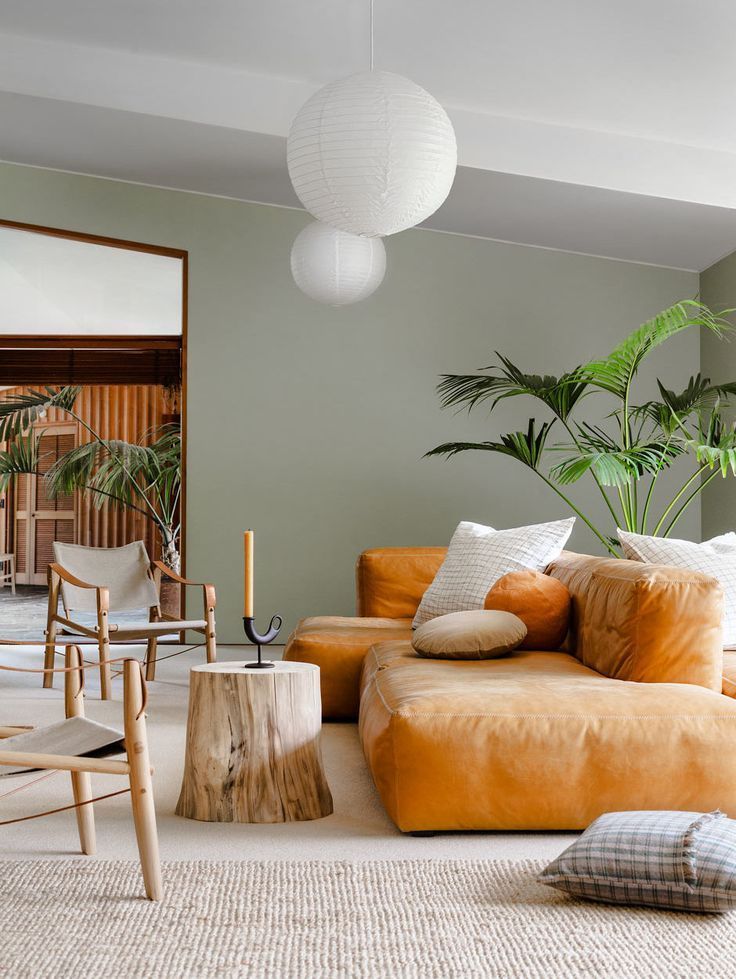
Berwick suggests selecting a pink with "brown or putty undertones" like Queen Anne from Benjamin Moore.
"I love pairing this faint hue with black and mixing it with a host of other naturals, like white, tan, and putty shades," Berwick explains. "It complements many styles of interiors, including the trendy minimalist spaces we see today."
14 of 20
Design: Kate Davidson, Photo: Lauren Miller, Graphics: Sabrina Jiang for MyDomaine
For those drawn to mustard shades, try pairing it with a charcoal gray.
"My favorite color scheme at the moment is yellow and gray because it's both timeless and evokes modern sensibility," Kate Davidson of Kate + Co Design says. "Yellow brings a light-hearted feel and lifts the vibe of the muted gray tones but actually blends effortlessly into a home that does not have much color. The pair works in most spaces because it's gender-neutral and surprisingly brings quite a calming feel to any space."
15 of 20
Design: West of Main, Graphics: Sabrina Jiang for MyDomaine
The two most popular neutrals of the moment, gray and brown, play well together too.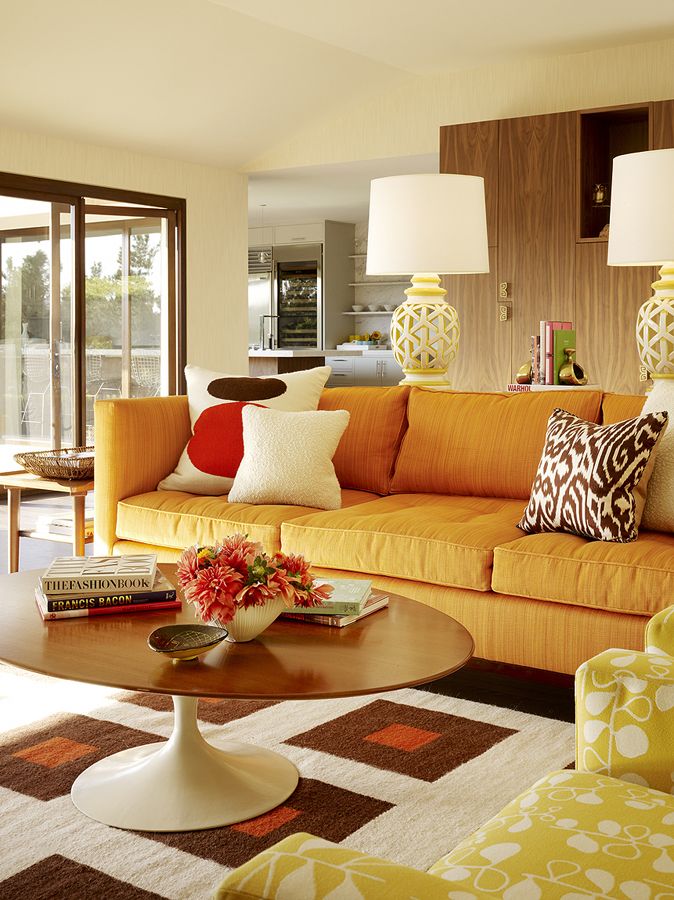
"When we work with cooler tones, such as grays, we bring in balance through warmer tones and textures," designer Sascha LaFleur of West of Main says. "For instance, we love using this deep charcoal grasscloth wallcovering that boasts hints of bronze when the light hits it just right, and pairing it with organic brown textures. Through decorative elements, we can bring in that beautiful warmth to even the coolest-toned rooms."
16 of 20
Design: West of Main, Graphics: Sabrina Jiang for MyDomaine
For a high-drama space without using a ton of color, pick neutral shades and include luxe fabrics.
"We love incorporating color through texture. Injecting color through texture creates drama, even if you still want to keep a neutral palette," La Fleur explains. "We paired this almond-colored linen headboard and dark wood nightstand with a textural moss-green grasscloth wallpaper and I believe these rich, moodier tones are certainly here to stay. Pair them with crisp, creamy whites to keep a fresh and inviting feel while developing some contrast with those deeper hues.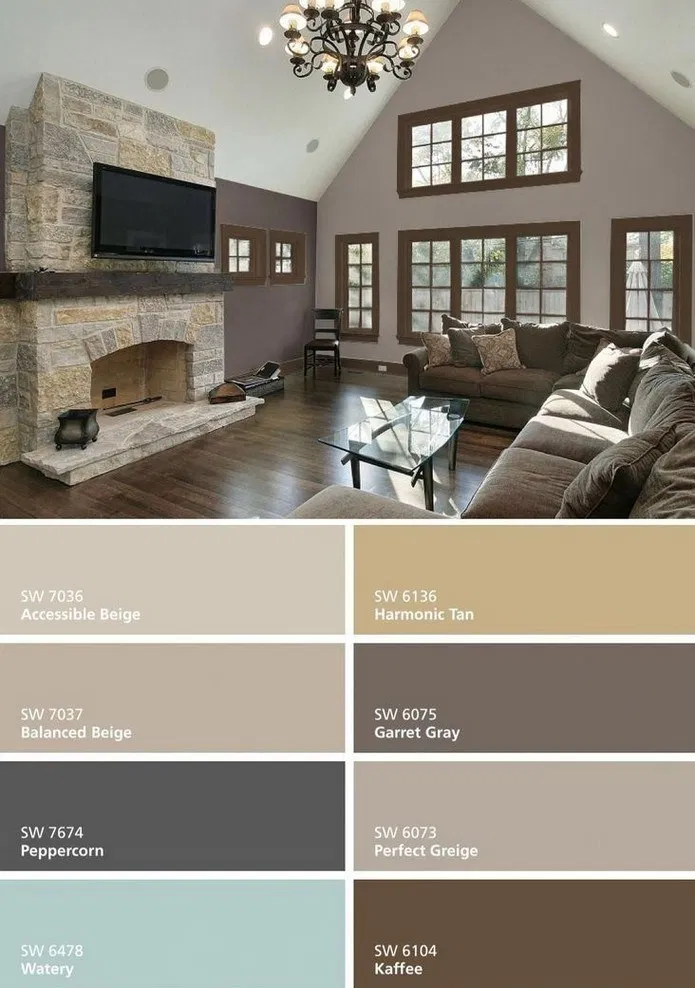 "
"
17 of 20
Design: Courtney Sempliner, Graphics: Sabrina Jiang for MyDomaine
An ever popular choice, white paired with some bright colors always delights.
"To me, the most classic color scheme of all is a clean white palette with pops of colored accents throughout with the help of artwork and accessories, designer Courtney Sempliner says. "My go-to white paint for a blank canvas is Benjamin Moore's White Dove, which has just enough warmth to keep a space from being too stark, but still feels fresh and works with any other tones you bring into a room."
Interior Designers Have Spoken and These Are the Best White Paints
18 of 20
Design: Courtney Sempliner, Graphics: Sabrina Jiang for MyDomaine
Blue works in almost any space, especially when paired with easy neutrals.
"I love using a neutral blue color scheme in almost any space," Sempliner says. "A soft blue, combined with any whites, taupes, and grays, works well to provide a calming and warm environment while still feeling dynamic and fresh.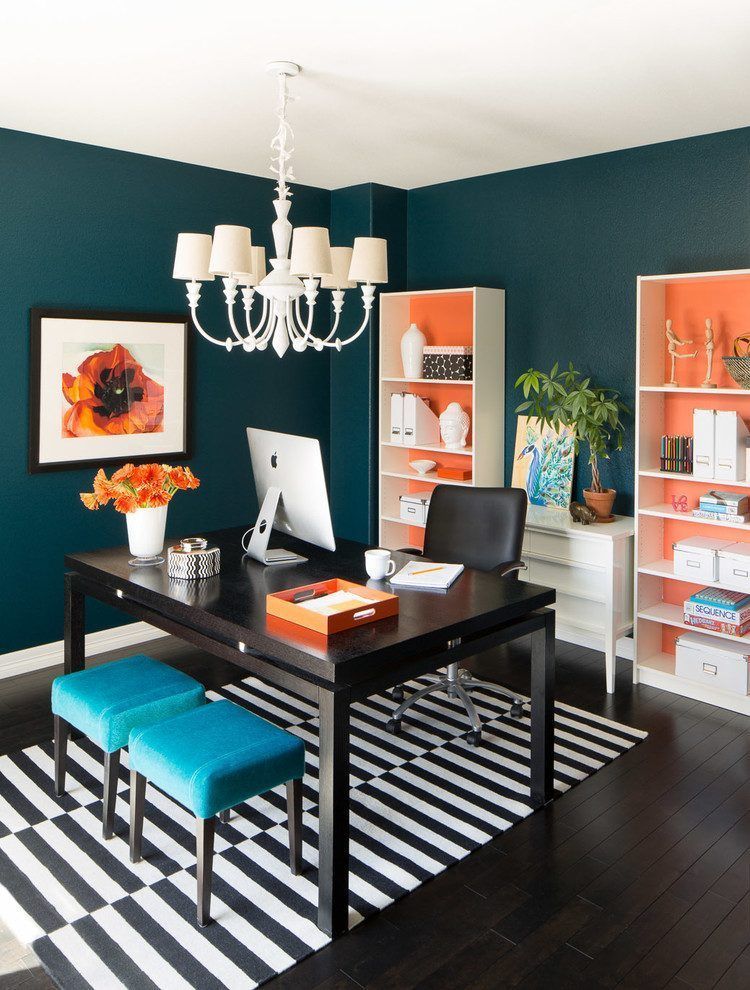 For paint colors, two of my favorite blue tones are Borrowed Light by Farrow and Ball and Van Deusen Blue by Benjamin Moore."
For paint colors, two of my favorite blue tones are Borrowed Light by Farrow and Ball and Van Deusen Blue by Benjamin Moore."
19 of 20
Design: Mary Patton, Photo: Molly Culver, Graphics: Sabrina Jiang for MyDomaine
Greens are having a moment. To get in on the trend, try an emerald shade with a neutral.
"A medium green like this bold emerald shade paired with warm neutrals, like tan, is my current favorite color scheme," Mary Patton, the owner of Mary Patton Design says. "Calke Green by Farrow & Ball is the perfect shade to try a floor-to-ceiling paint job."
20 of 20
Design: Marlaina Teich, Photo: Patrick Cline, Graphics: Sabrina Jiang for MyDomaine
A true classic, black and white will never go out of style.
"Classic black and white is a chic way of dressing up a more casual interior style, like the trendy modern farmhouse," Marlaina Teich of Marlaina Teich Designs says. "The key with making this simple color palette work is layering in texture, which you can do by varying up the paint finishes.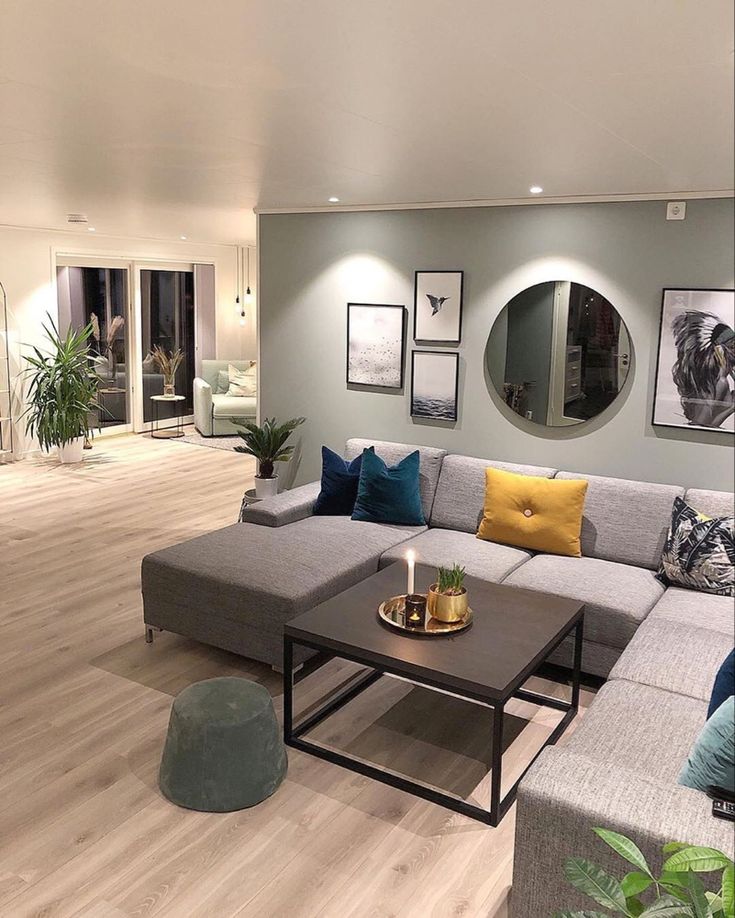 "
"
The 12 Interior Paint Colors Designers Can't Get Enough Of
Interior Design Color Trends This Year – Forbes Home
GettyTable of Contents
- 1. Nature-Inspired Greens
- 2. Warm Linens and Whites
- 3. Bright Yellows
- 4. Reimagined Blues
- 5. Muted Grays
- 6. Dark Earth Tones
- 7. Modern Primary Colors
{{ tocState.toggleTocShowMore ? 'Show more' : 'Show less' }}
The colors of 2023 take inspiration from nature, bringing a calm, serene and centered presence into your home.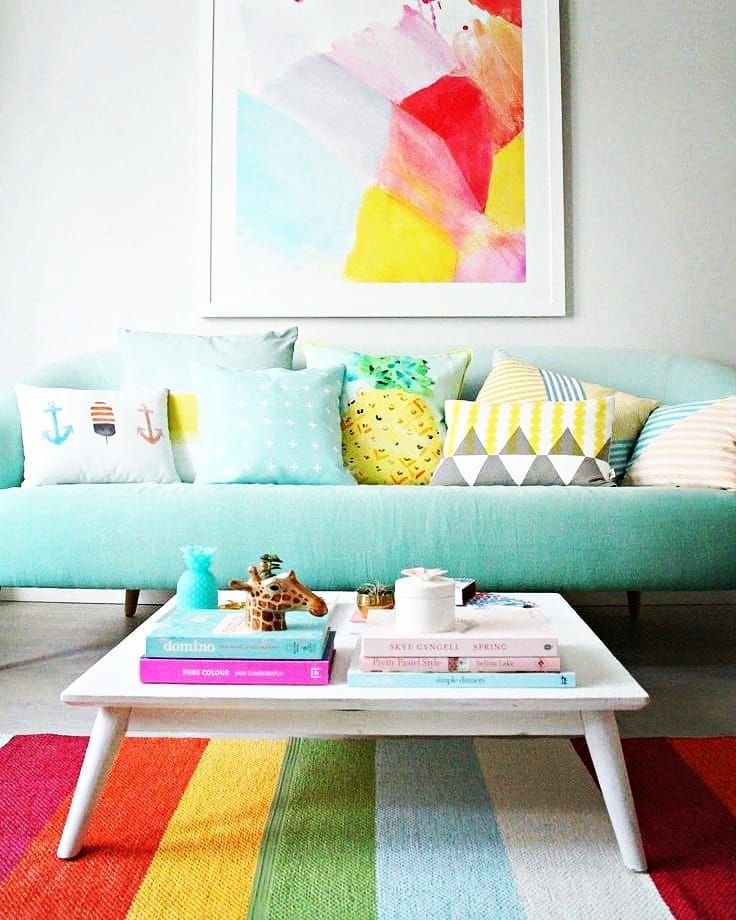 So far this year, experts have seen a shift to prioritizing health and wellness in the house and it’s a trend that most expect to see growing in 2023. From dusty blues and delicate greens to grounded earth tones, design and home color trends are all brimming with optimism and serenity. These trendy, yet timeless, colors will look modern for years to come.
So far this year, experts have seen a shift to prioritizing health and wellness in the house and it’s a trend that most expect to see growing in 2023. From dusty blues and delicate greens to grounded earth tones, design and home color trends are all brimming with optimism and serenity. These trendy, yet timeless, colors will look modern for years to come.
Advertisement
THIS IS AN ADVERTISEMENT AND NOT EDITORIAL CONTENT. Please note that we do receive compensation for any products you buy or sign up to via this advertisement, and that compensation impacts the ranking and placement of any offers listed herein. We do not present information about every offer available. The information and savings numbers depicted above are for demonstration purposes only, and your results may vary.
Compare Quotes From Top-rated Interior Decorators
Free, No-commitment Estimates
Find a Decorator
1. Nature-Inspired Greens
Getty
Colors that set the tone for 2023 will reflect our homes’ craving for comfort and nature.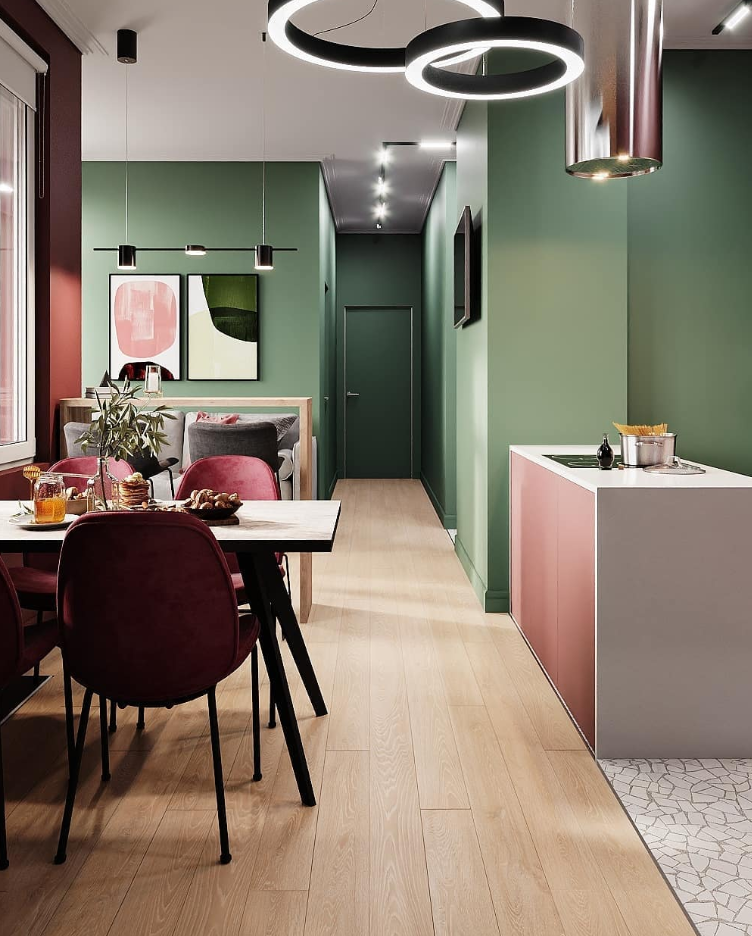 Greens will add a spin to timeless classics and work as a new neutral anchor for most indoor spaces. Interior stylist Sarah Nelson is also predicting green will be the color of the year.
Greens will add a spin to timeless classics and work as a new neutral anchor for most indoor spaces. Interior stylist Sarah Nelson is also predicting green will be the color of the year.
“I think sage green is an obvious choice! It’s so versatile. You can choose a subtle hue or a more vibrant one depending on the room,” Nelson told Forbes Home. Expect to see cool, organic greens that work beautifully with wood and other natural elements that will be trending as well in 2023.
Natural greens help us refocus and prioritize our mental well-being, something most people will continue to do next year. These shades promote a space that feels grounding and connects the inside with the outer world.
Top green colors to watch for:
- Benjamin Moore: Fernwood Green, October Mist and High Park
- Sherwin Williams: Evergreen Fog, Rosemary, Cucuzza Verde and Basque Greens
- PPG: Olive Sprig
- Glidden’s: Guacamole
- Valspar: Blanched Thyme
2.
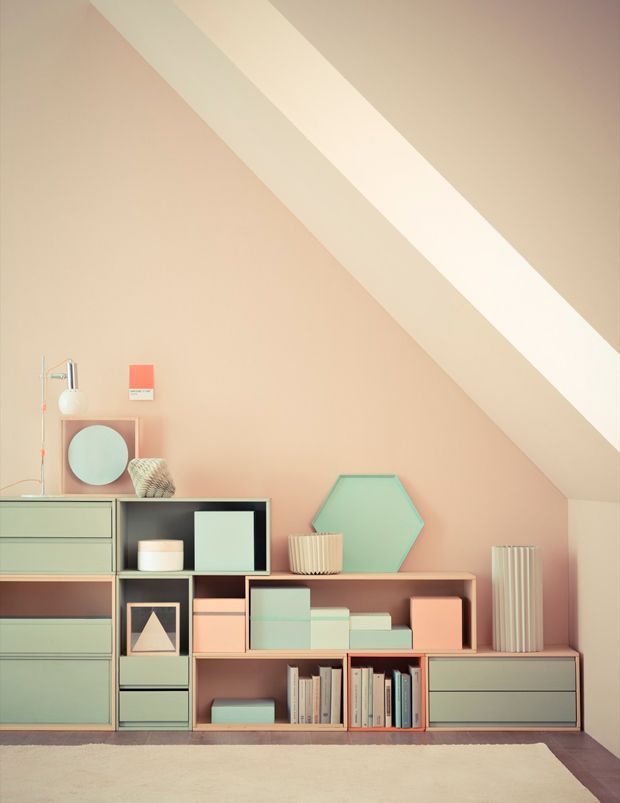 Warm Linens and Whites
Warm Linens and Whites Getty
Ultra-clean neutral colors that organize and connect spaces throughout the house will prevail. This color trend aligns perfectly with interior design trends focusing on extreme minimalism aesthetics. There’s new importance for multi-use and open-plan spaces that pair well with simple colors.
“In 2022, we are ridding ourselves of the grays and blue and swapping it for the creamy-white and beiges blended with jewel tones,” predicts Laetitia Laurent of Laure Nell Interiors. Expect whites in entries and hallways to connect spaces throughout the home.
Popular neutrals and whites for 2023:
- Benjamin Moore: Steam, Natural Linen and Morning Dew
- Sherwin Williams: Accessible Beige, Shoji White, Beige, High Reflective White and Alabaster
- Valspar: Gilded Linen and Subtle Peach
3. Bright Yellows
Getty
With retro 1970s styles coming back, we’ll see cheerful pops of color in yellows and pastels to create a modern and playful look.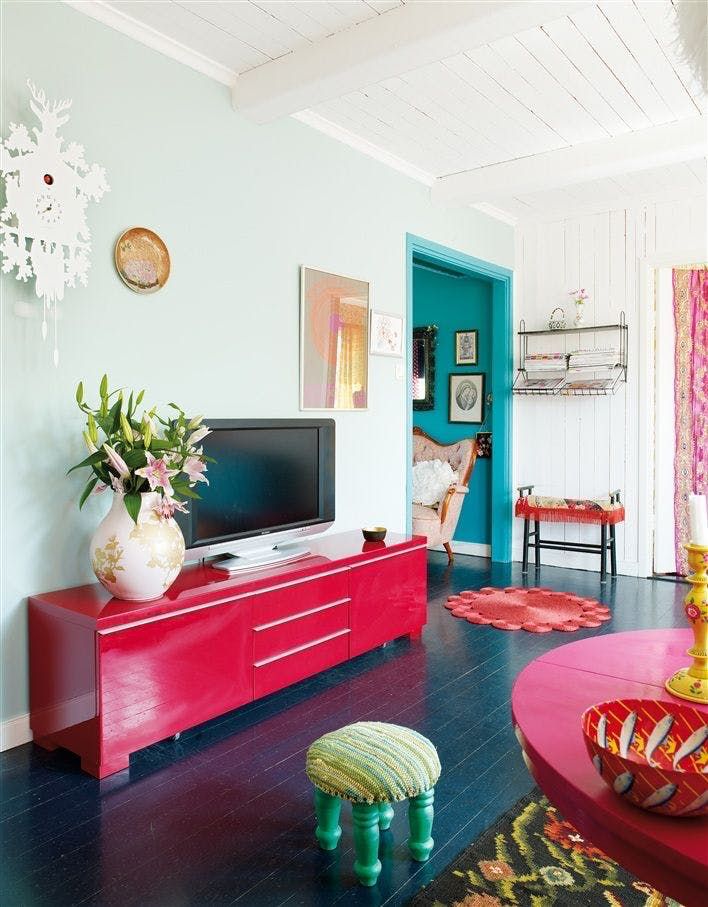 Colors that keep the mood bright and joyful make their way into the spotlight. As we spend more time at home, it’s all about designing spaces that embody happiness. Yellows play well with textured accessories, luxurious textiles and other interior design trends we expect to see rising in 2023.
Colors that keep the mood bright and joyful make their way into the spotlight. As we spend more time at home, it’s all about designing spaces that embody happiness. Yellows play well with textured accessories, luxurious textiles and other interior design trends we expect to see rising in 2023.
The most popular yellow tones for next year:
- Benjamin Moore: Pale Moon
- Sherwin Williams: Chartreuse and Peace Yellow
- Valspar: Country Charm and Delightful Moon
4. Reimagined Blues
Getty
While we’ll see soft blues and iridescent blues, daring hues will be used as accents throughout the home, with Pantone’s 2022 Color Of The Year being Very Peri, an intense version of the classic periwinkle blue. Next year, blues are reimagined to display carefree confidence to encourage inventiveness and creativity.
After everything we’ve been through, in 2023, blues are meant to help us embrace this ever-changing reality and open us to a new land of opportunity.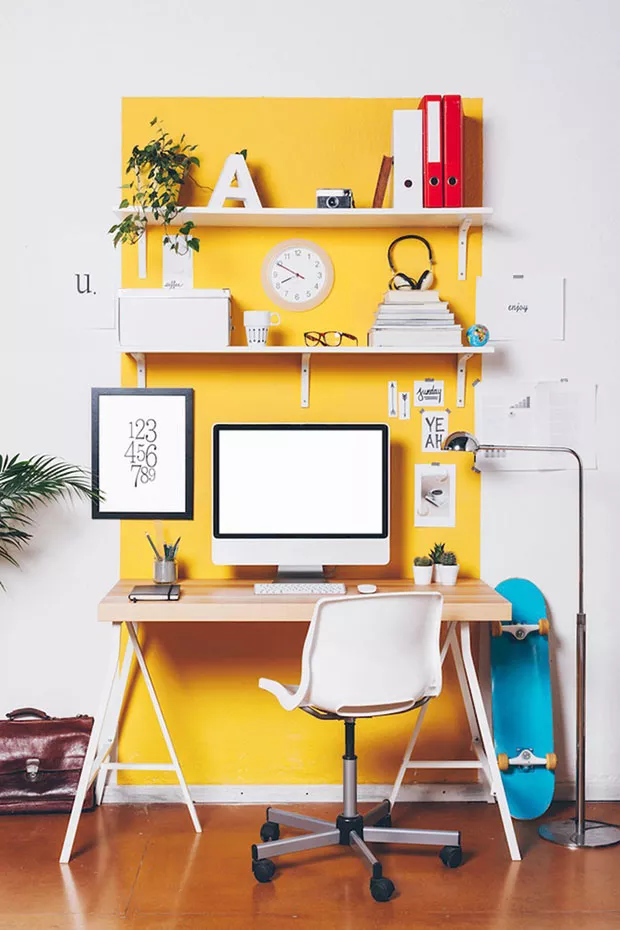 This is why interior designers call for more daring interiors that move away from the norm or expected.
This is why interior designers call for more daring interiors that move away from the norm or expected.
Popular blue colors trending in 2023:
- Benjamin Moore: Quiet Moments
- Sherwin Williams: Aleutian and Moody Blue
- Pantone: Very Peri
- Behr’s: Breezeway
- Graham & Brown: Breathe
5. Muted Grays
Getty
Elegant and balanced, grays are the warmer alternative to classic whites and neutrals. Perfect to work with natural elements and accents to create a comfortable look. Gray with green and red undertones shift the mood making spaces feel more dependable and comfortable—a common reason we see in interior design trends for 2023.
Muter grays can be balanced with other neutrals and natural materials to create a coordinated look that feels modern yet timeless.
Top gray tones to try in 2023:
- Sherwin Williams: Samovar and Felted Wool
- Valspar: Grey Suit
6.
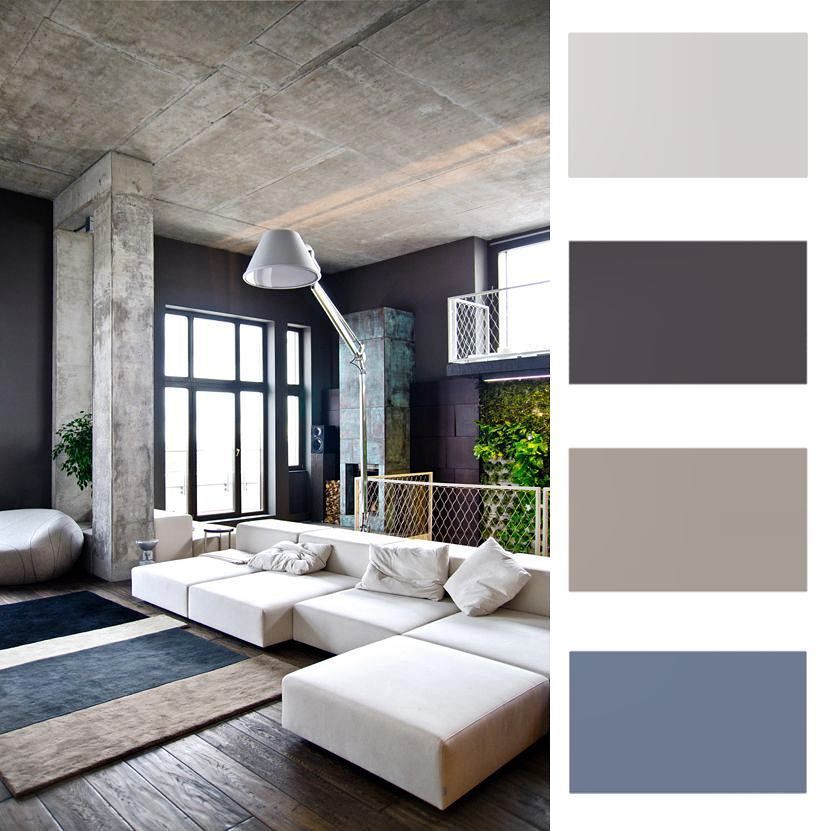 Dark Earth Tones
Dark Earth Tones Getty
“Earth tones will be on the rise in 2022 borne from a desire to bring the outside in. From color palettes, we will see the incorporation of natural and warmer colors such as sage green and wood tones,” explains Claire O’Connel of The Flipping School. Dark yet approachable shades will add a level of sophistication to otherwise basic spaces.
Dark hues give us stability, something many are craving after two years of uncertainty. Earthy tones help us feel comforted no matter what’s happening in the outside world. With the rise of nature-inspired decor and natural elements, earth tones will continue to be trending.
Trending earth tones to consider:
- Benjamin Moore: Gloucester Sage and Mysterious
- Sherwin Williams: Urbane Bronze and Iron One
- Valspar: Rustic Oak and Fired Earth
7. Modern Primary Colors
Getty
Rich, darker shades that bring a sense of stability will be expected in bedrooms and living rooms.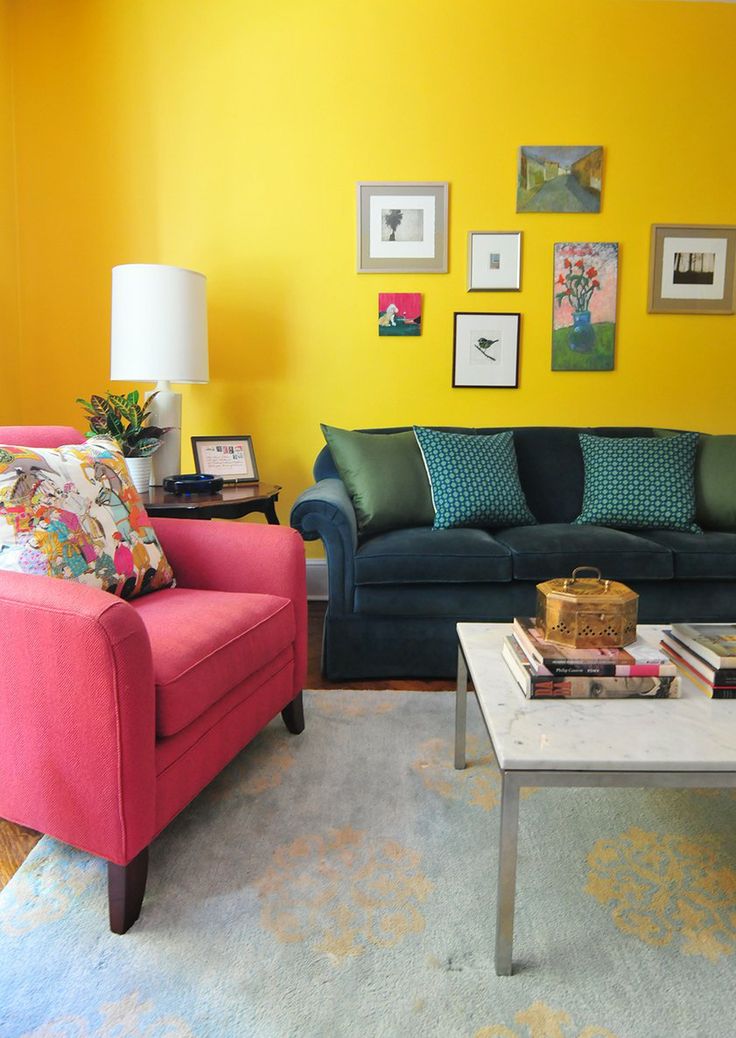 As our “new normal” keeps shifting, jewel tones add a familiar touch of luxe that feels comforting and consistent. Combined with soft wood tones and contrasting pastels, these tones can create a soothing and welcoming vibe that works perfectly for intimate areas like the bedroom.
As our “new normal” keeps shifting, jewel tones add a familiar touch of luxe that feels comforting and consistent. Combined with soft wood tones and contrasting pastels, these tones can create a soothing and welcoming vibe that works perfectly for intimate areas like the bedroom.
Top jewel tones to try in 2023:
- Benjamin Moore: Wild Flower
- Sherwin Williams: Bakelite Gold, Red Bay, Blackberry, Naval and Sierra Redwood
- Valspar: Mountain River
Advertisement
THIS IS AN ADVERTISEMENT AND NOT EDITORIAL CONTENT. Please note that we do receive compensation for any products you buy or sign up to via this advertisement, and that compensation impacts the ranking and placement of any offers listed herein. We do not present information about every offer available. The information and savings numbers depicted above are for demonstration purposes only, and your results may vary.
Compare Quotes From Top-rated Interior Decorators
Free, No-commitment Estimates
Find a Decorator
Your Home. Your Decisions. Our Support.
Your Decisions. Our Support.
Get expert advice on your home, design tips, how much to pay for pros and hiring experts, delivered to you daily.
{{ newsletterState.emailErrorMsg }}
Thanks & Welcome to the Forbes Home Improvement Community!
{{ newsletterState.emailErrorMsg }}
I agree to receive the Forbes Home newsletter via e-mail. Please see our Privacy Policy for more information and details on how to opt out.
how to combine colors in the interior - Blog BasicDecor
The right combination of colors in interior design give coziness to the house, corrects the flaws of the space and changes the look of the room. But a careless attitude to color schemes will ruin even the most expensive apartment. Therefore, when choosing the color scheme of the interior, it is worth knowing a few basic rules:
- The brighter the color, the less it should be in the design. Emphasize them.
- Light shades can be used without restrictions.
- Each item has a color. Consider this even when choosing door handles. Any wrong shade will spoil the interior design.
- The balance of warm and cold. Saturated cold soften with two warm shades and vice versa.
- Rule of three. Choose three matching colors and combine them in the interior.
- 60/30/10. 60% - primary color, 30% - secondary, 10% - accent.
- A game of contrast. Any bright tone is combined with black and white, use this rule when you want to highlight accents.
Color combination in the interior of different rooms
Living room. In a small room it is better to use light shades, they will visually expand the space. Cold shades can be used in a large living room, where there is a lot of daylight, bright lighting is thought out. Warm ones are suitable for a living room with windows facing north.
Bedroom. It is better to refuse strong contrast here. Color transitions should be soft.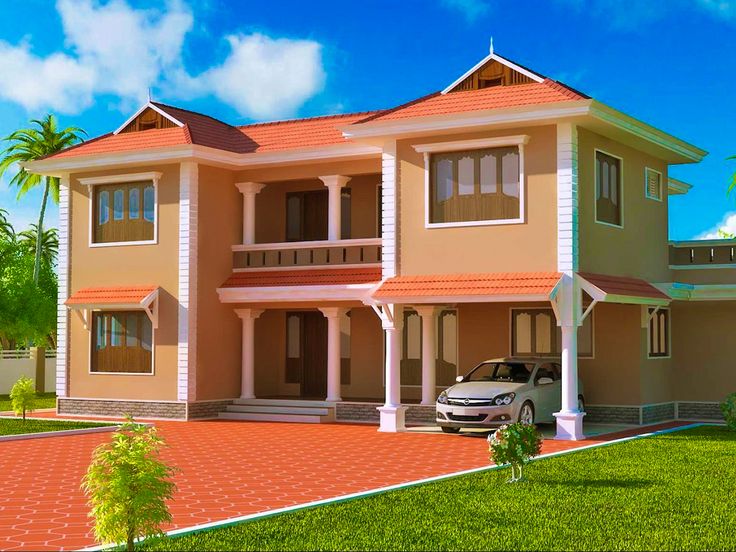 Choose warm or pastel soft colors. Both warm and cold scales are appropriate here if good lighting is chosen.
Choose warm or pastel soft colors. Both warm and cold scales are appropriate here if good lighting is chosen.
Kitchen. For a large kitchen, don't be afraid to choose bright, bold hues. In combination with calm walls, they will come in handy. The main thing is that the tones do not irritate. And for small kitchens, light warm colors are suitable.
Hallway. Consider its size. For large - juicy shades, both warm and cold. And for a small one, calm, noble ones are suitable. Such an interior can be diluted with a bright accent.
Bathroom. There are two common ways to decorate a bathroom with a color: 1) in one scale, using several of its shades; 2) a combination of three colors.
Child. For a child under five, choose bright colors: green, yellow, red. For older children and teenagers, light colors are suitable: a combination of blue with white or gray, using beige as the main tone and combining it with light green, purple, yellow, blue or pink.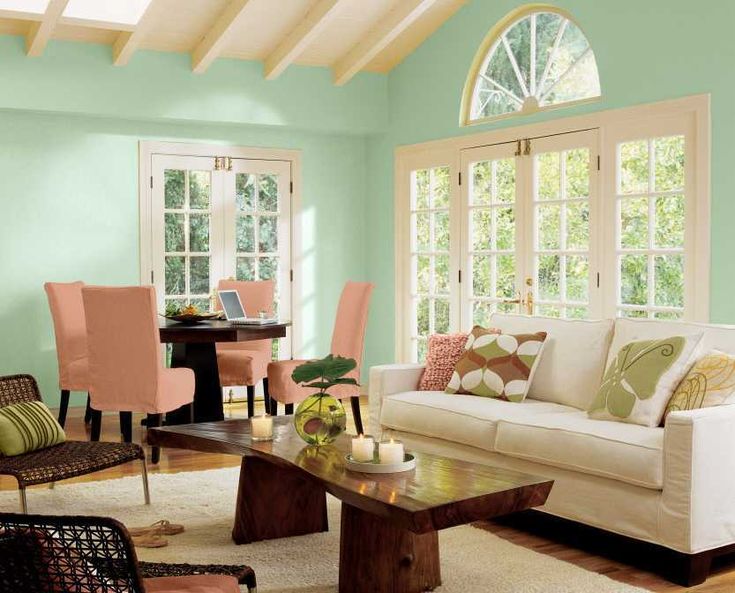
Cabinet. Choose cool tones: blue combined with burgundy, gray or red. An excellent solution is an office in a dark brown palette. Light colors are also suitable, but they should be cold, not warm.
Color harmony in interior design
There are several types of color harmony in interior design. They are used by designers and everyone who wants to successfully choose a color solution for their home:
- Analogue. A combination of three colors that are adjacent on the color wheel, such as yellow-green, green and blue-green.
- Complementary. Two opposite (yellow and purple).
- Split Complementary. Any color and two tones located to the left and right of its complementary.
- Triadic. Vertices of an isosceles triangle.
- Tetraid. Vertices of a square.
- Combined. Combination of analog and complementary harmonies.
- Black and white with any palette.

Rules for choosing an accent color
Important to consider:
- Who will live in the room: a child, an adult or an elderly person.
- Color of walls, ceiling, floor.
- Target settings: zoning or only accentuation, that is, the use of an object as the main idea of interior design.
- Combination with lighting and color of other objects in the room.
Psychology of color
When choosing a color design, one should take into account the psychological influence of color:
Red
+ Strength, passion, energy, love, power.
- Increases aggression, irritability.
Yellow
+ Joy, fun, enthusiasm, inspiration, increases activity.
- Instability, irresponsibility.
Green
+ Relieves stress, soothes
- Increases feelings of envy, jealousy
Blue
+ Stability, security, spiritual development.
- Cold, fear.
Violet
+ Nobility, luxury, spirituality.
- Promotes depression.
Orange
+ Fights depression.
- Causes laziness, lethargy.
Blue
+ Freedom, protection, sophistication.
- Causes weakness.
Gray
+ Elegance, depravity.
- Increases indecision, sullenness.
Errors in color selection
Ignore lighting. Different light can change colors beyond recognition, so when choosing it is important to consider the palette in daylight and artificial light.
Iteration of colors in one space. The principle "the more the better" will definitely not work here. It is important to use the number of colors that will be harmoniously combined in the design of your interior.
Boring palette. Another extreme resorted to by apartment owners due to inexperience. Remember that the rule of three colors is an indispensable assistant when choosing a color scheme, use it if you are afraid to rely on your taste and intuition.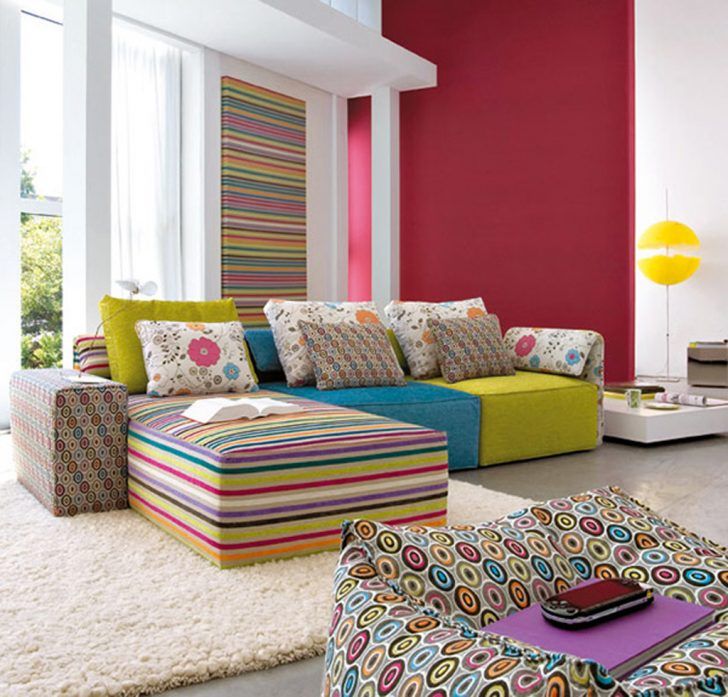
Lack of color combination within the apartment. Do not forget that the colors should be in harmony not only within one space, but also in the design of the entire apartment or house. A large number of colors that do not match with each other leads to a sense of chaos. Therefore, choose overlapping ones.
An abundance of the following colors:
- Red leads to nervous tension.
- Black and rich purple narrow the space.
- Brown in combination with its shades can lead to apathy and bad mood.
- Gray - the appearance of sadness and despondency.
- Blue leads to a feeling of lack of comfort.
Psychology of color in the interior | blog DEFO
The human psyche is interesting and unpredictable! Sometimes how a person feels and how he perceives the world can be influenced by factors that we do not even think about - for example, colors in the interior. At the same time, psychologists have long noticed that the prevailing color in the environment directly affects the mood and even human health. Color therapy methods are built on this knowledge.
Color can enhance mood, increase productivity, create the optical illusion of a large space, or have other interesting effects. Knowing this phenomenon, you can use it consciously, equipping comfortable spaces for rest and work.
The secrets of color influence are well known to designers. They usually choose one color as the dominant color for 60% of the space. Most often it is one of the neutral colors. Then they choose a complementary (which takes up about 30% of the area) and an accent color for bright details. Each shade in the interior has its own effect on the psyche of the people present in the room, and all together they create the very productive and comfortable atmosphere for which the specialist worked.
Effect of color on emotions and activities
Colors can be divided into warm and cold colors. Warm ones include red, yellow and orange - they cause a feeling of activity and passion, in large quantities they can even cause anger.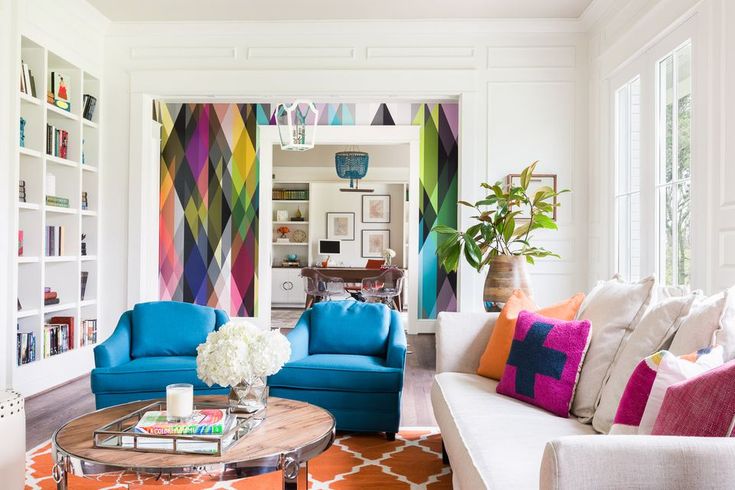 Conditionally cold colors include blue, green and purple. They are associated with tranquility, harmony and peace, but also with inactivity and sadness.
Conditionally cold colors include blue, green and purple. They are associated with tranquility, harmony and peace, but also with inactivity and sadness.
Experienced designers are well aware of the influence of color and their combinations and use them to achieve the desired effect. And although people perceive colors in different ways (for example, a certain color can evoke memories or feelings in one, and leave it indifferent to another), there are general properties of colors that are true for most people.
White
White color in the interior is associated with cleanliness, air, lightness and free space. It can make the room visually larger, and as an accent, bring invigorating freshness to the interior.
Yellow
Yellow is the brightest and most optimistic color of the palette! Its effects vary depending on the shade. Pale yellow walls or ceilings can add sunlight to the interior. Bright yellow is perfect for accent decor, it will add energy and drive to the interior.
Reproduction “ Lisbon tram ”
Red
The "hottest" of all the colors in the palette. This color is stimulating and invigorating, but can also provoke emotions of anger and irritation. The red color is indispensable if you need to bring an impulse and a mood of excitement, at the same time it should not be too much, so as not to cause anxiety and inner protest. Orange, a cheerful and stimulating color, should be perceived in a similar way.
In general, bright warm colors inspire optimism and contribute to a positive mood. However, they should be used in moderation, choosing a shade that is pleasing to the eye.
Hit armchairs with bright upholstery will enliven even a “cold” loft-style interior
Brown
Brown color creates a feeling of naturalness and comfort in the interior. This color is considered neutral, evokes associations with natural, practicality and reliability, traditions and strong support. It is no coincidence that the decoration of furniture in natural brown shades is considered an example of good taste.
It is no coincidence that the decoration of furniture in natural brown shades is considered an example of good taste.
Brown can be very pleasant and appetizing if it takes on a shade of chocolate, coffee or cocoa. Furniture with natural veneer veneer, for example, as in series Taurus - montenegro oak shade, can add solidity, warmth and depth to the interior, make the office more hospitable.
Blue
Blue is very diverse, has many variations, but in general it gives the impression of clarity, order and calmness. This is the perfect color for spaces that are full of thought or hard work. The sense of peace and quiet that blue can give makes it a good choice for an office rest rooms or lounge areas.
Green
Noble green gives an effect similar to blue, also evoking associations with nature, harmony, only it calms and pacifies even more. Here, too, it is important not to overdo it - an abundance of green can make the mood depressed, just as a lot of blue can increase depressive feelings.
Reproduction Bamboo
Pink
It can be used to create a fresh and extraordinary atmosphere in the house, add creativity and coziness. In the mentality of most people, pink is considered feminine, but in small quantities, it can bring peace and comfort even in a strict office environment.
Dawn Over New York Reproduction
Purple
The psychological effect of magenta helps to create a luxurious and expensive environment in the office or at home. Purple with a predominance of blue can be serene and calm, creating an atmosphere of mystery. Closer to the red spectrum, a shade of purple attracts more attention and dominates the interior.
Neutral colors
Color psychology is more than warm and cool colors, there are also so-called neutral shades. Neutral colors tend to fade into the background and don't have a strong emotional impact. For example, when entering an office with white walls, a person may not notice the presence of color at all.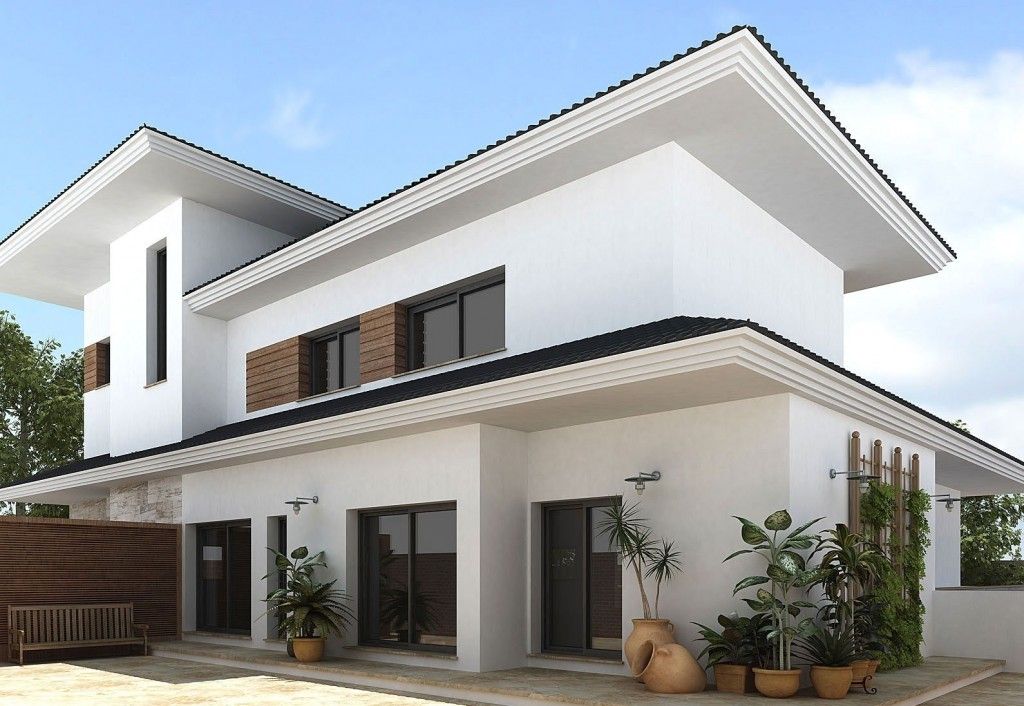
Neutrals include a light brown palette, creamy shades of gray and beige, any shades of white (for example, light light blue). Black is also considered a neutral color, but it has its own unique psychological effects. So, black is good for creating contrasts and the effect of drama, attracting attention, creating an atmosphere of seriousness and weight. In the interiors of cafes, beauty areas, executive offices, black can bring an element of sophistication and elegance. In large quantities, it depresses, evoking associations with mourning.
Office color
Color is a fundamental part of the design of any workspace and can influence the mood, concentration and health of employees. Since we spend most of the day in the office, and it is difficult to predict the personal impact of color on each of the employees, therefore, designers often choose neutral colors as a base, diluting them with bright details (accent wall, paintings, screens and partitions, colored decors of furniture facades).
Here is a partial list of colors that will have a good impact on productivity in the office:
- different shades of white;
- teal;
- grey;
- blue;
- brown;
- yellow;
- green;
- orange.
1. Not too white
The degree of whiteness of wallpaper or paint can vary greatly, each shade has its own name. The palette of some brands includes hundreds of conventionally white colors. In offices, you should not use ultra-white color - it is too intense and bright, and is only good for the ceiling. Neutral white colors are suitable for walls, they combine well with other colors without creating excessive contrast.
2. Light teal
Because teal is a combination of blue and green, it can turn any workspace into a productivity machine! The main thing is not to overdo it with its quantity in the interior.
Angle office partitions
3. Gray
Gray
Gray is the middle color between black and white, which creates a neutral mood. It is easy to combine with other colors, create the desired emotional message.
4. Blue
Soft light blue color calms the nerves, relieves stress and creates a harmonious working atmosphere. It is especially good to organize an interior in blue tones in open offices or client areas.
5. Brown
Brown works well in a space that needs confidence, energy and strength. In combination with luxurious wooden office furniture, the color will bring comfort and pleasant warmth.
Trevizo President Cabinet is an Italian classic with a noble touch in Canaletto walnut.
6. Pastel yellow
For marketing agencies, creative industry companies, pastel yellow will add creativity to employees. Yellow with a touch of gold creates beautiful combinations with white and brown colors.
7. Green
A rich, dark, velvety green shade ideal for the financial and healthcare industries.
